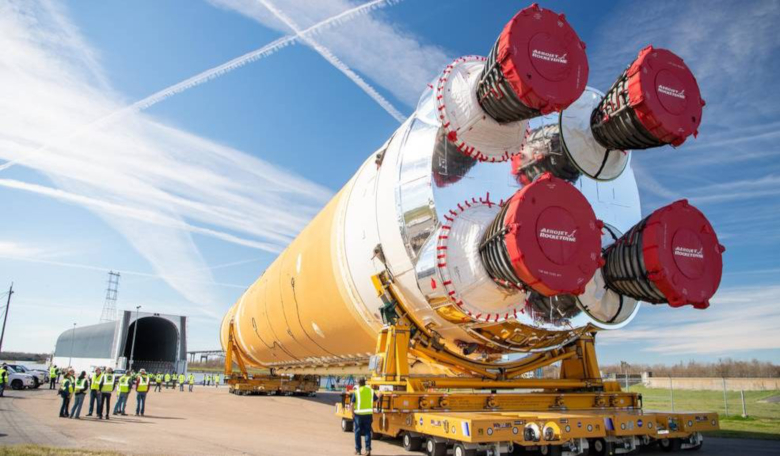NASA officials deviated from US law when they decided to track only some of the costs of the Space Launch System (SLS) rocket. They later masked the troubled programme’s cost overrun, which would have triggered more oversight by now, with an accounting decision that internal and external investigators have judged to be a violation.
Officials have disregarded NASA’s usual way of calculating schedule margins, making the predicted launch dates for SLS unreliable. Meanwhile, refurbishing engines from the Space Shuttle programme turned out to be harder, and costlier, than anyone thought.
NASA’s Office of Inspector General (OIG) outlined these issues and many others in an audit report (issued 10 March) titled “NASA’s Management of Space Launch System Program Costs and Contracts.” Doug Loverro, associate administrator of NASA’s human exploration and operations mission directorate, signed NASA’s response in which the agency concurs with all five recommendations made in the OIG report.
Expendable SLS rockets are NASA’s plan for launching heavy payloads, especially the Orion capsule intended to carry astronauts to the Moon. SLS “represents the largest development of space flight capabilities NASA has attempted since the Space Shuttle Program began almost 50 years ago,” according to the OIG report, but “program management has been a continuous challenge.”
Many years of work took place before contracts were even finalised, and contractors received award payments they didn’t deserve.
Boeing, prime contractor for the rocket’s core stage, shut down production in October after inspectors cited safety and quality assurance violations, including “foreign objects found in various parts” of the first SLS rocket’s core stage, according to the report.
Now the rocket’s first mission, previously known as Exploration Mission 1 and now Artemis 1, will probably slip to March 2021, if not later, representing more than a three-year delay from NASA’s original commitment.
Yet NASA has continued placing orders for more SLS rockets to launch future missions, amounting to billions of dollars that the OIG says isn’t tracked under any of the normal methods. In October, the same month production shut down, NASA authorised Boeing to start buying materials for up to 10 more SLS core stages, among other elements.
Both the OIG, in the 10 March report, and the US Congress’ Government Accountability Office have concluded that NASA officials improperly tracked the SLS cost overrun, making the overrun look artificially small, following changes to the programme in 2017. At that time, they stopped counting certain costs toward Artemis 1 — still the furthest out that projections go — but they never lowered the number NASA committed to accordingly.
NASA has never released an SLS cost estimate beyond Artemis 1, a choice that both audit offices now have also taken issue with, the OIG calling it “a deviation from program requirements and federal law”.
But even judging against this partial projection, the OIG auditors estimate that NASA has crossed the 30 percent cost overrun threshold at which NASA administrator Jim Bridenstine must notify Congress. NASA then must submit a revised plan and Congress will decide whether to reauthorise the programme for funding. In a situation in which Congress does not reauthorise funding, NASA would have to stop spending money on SLS, except to close down the programme, 18 months after Bridenstine’s notification.
In the agency’s response, among other recommendations, NASA concurs that it should:
Notify Congress that the agency has exceeded its cost commitment by at least 30 percent. The OIG calculates the overrun as 33 percent at the end of the 2019 fiscal year — $2 billion more on development than the roughly $6 billion estimated through Artemis 1. Officials said they’re reworking the programme estimates anyway because of the new Artemis goal, announced last year, to land two US astronauts on the Moon in 2024. The OIG estimates total SLS costs, including those not being tracked against a commitment, at $18.3 billion assuming the Artemis 1 launch slips to 2021.
Implement management policies for “greater visibility” into cost estimates and to “appropriately and transparently track costs.” NASA says it also wants to “redefine formal reporting requirements” for long programmes such as SLS, which it has said the current cost-tracking structure isn’t ideal for.











